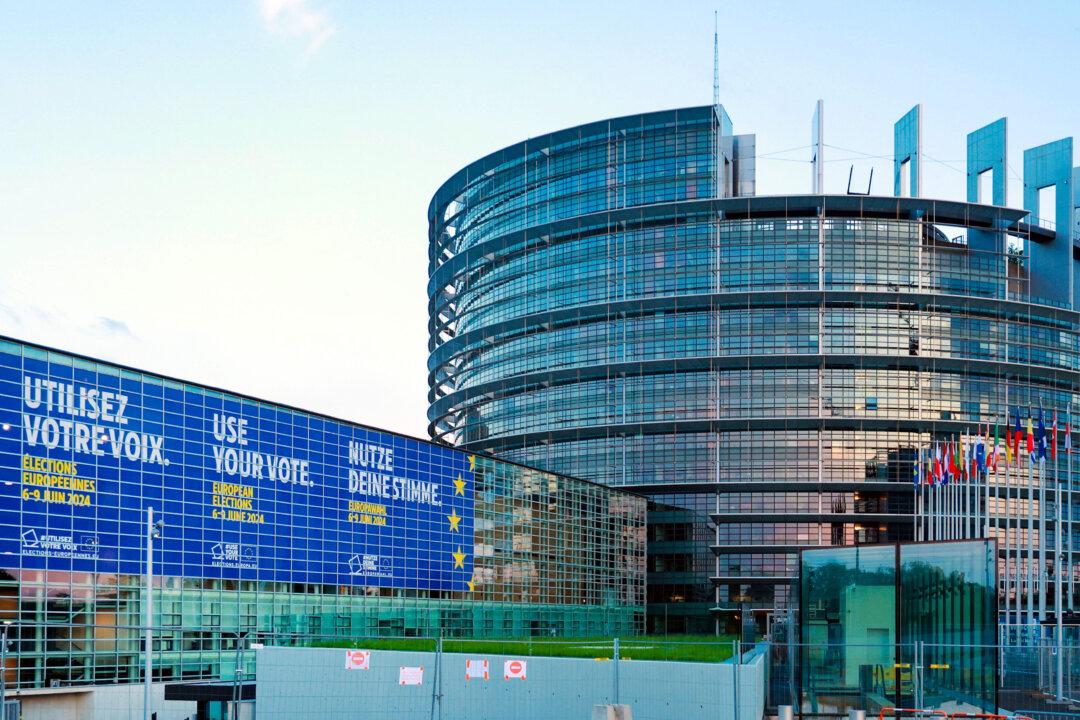WASHINGTON—Between September 1939 and June 1941, the Soviet Union killed an estimated 25,700 Polish citizens—members of the country’s elite—and the United States National Archives declassified 1,000 pages on Sept. 10 related to the killings now known as the Katyn Forest Massacre.
The documents being declassified is the result of years of work by organizations within the Polish-American community. A formal request was filed by Representatives Marcy Kaptur of Ohio and Daniel Lipinski of Illinois in August 2011. The files were made available through the National Declassification Center (NDC), which was formed by an executive order from President Barack Obama in 2009.
The Soviet Union initially kept the Katyn atrocity a secret. Just 17 days after World War II broke out, the Soviet Union invaded Poland, and Poland’s territory was divided between Germany and the Soviet Union under a secret agreement between the two invaders called the Molotov-Ribbentrop Pact.
During the invasion, the Soviets captured an estimated 250,000 Polish soldiers. The officers were pulled aside and sent to prisoner-of-war camps alongside civilian internees. In the Spring of 1940, Soviet Minister of Internal Affairs Lavrentiy Beria suggested the execution of the Polish prisoners-of-war in a memo, and the memo was then signed by Stalin, Molotov, and two other high ranking Soviet officials. The largest execution site was Katyn forest, but there were also several simultaneous execution sites at other Soviet cities.
The mass graves at Katyn forest were first discovered by the Germans who invaded Russia during World War II. The Soviets refused to take responsibility for the crimes, however, and blamed Germans for the mass murder. The Germans organized an internationally-staffed medical commission that excavated the area in early 1943. Among the observers were two American prisoners-of-war captured by the Germans, Capt. Donald B. Stewart and Lt. Col. John H. Van Vliet. Upon seeing the evidence they were both convinced that the Soviets were responsible for the atrocity.
Stewart and Vliet sent coded reports to Washington about what they were shown in Katyn. However, Van Vliet’s report from 1945 about Katyn mysteriously disappeared. Several records have been declassified discussing this issue and the fact that the document never resurfaced. Van Vliet reproduced his report from memory when he testified before a Congressional Committee to investigate the Katyn Forest Massacre in 1951.
The documents that the National Archives and Records Administration (NARA) located and released are categorized into two groups: a 1948 Army investigation into the original 1940 incident, and records from the 1951 and 1952 investigation by the Congressional Committee to Conduct an Investigation and Study of the Facts, Evidence and Circumstances of the Katyn Forrest Massacre.
The records are related to the Madden Committee, which is also known by its longer name, the Congressional Committee to Conduct an Investigation and Study of the Facts, Evidence and Circumstances of the Katyn Forrest Massacre. This committee conducted an investigation from 1951 to 1952 and determined unanimously that the People’s Commissariat for Internal Affairs (NKVD), a Soviet government agency that oversaw the regular public police and the secret police, was responsible for the executions.
The National Archives encourages the public and researchers to research declassified records through scanning, uploading, and viewing. Researchers can also suggest documents for transcribing and file a declassification request if a withdrawal slip is encountered.
After the discovery of the Katyn atrocity, the Soviets covered up the Katyn incident with propaganda and censorship, as did Communist authorities in Poland. Even mentioning the atrocity was dangerous at that time.
Only after Poland regained its sovereignty in 1989 was knowledge of the massacre released. In 1990, Russian President Mikhail Gorbachev formally expressed regret and admitted that NKVD was responsible for the Katyn atrocities. This political position, however, was not translated into a legal expression.
Maria Szonert-Binienda, President of Libra Institute, who represents the Katyn Council, an alliance of Katyn and Siberian communities across the United States, touched on the issues of justice for Katyn victims, saying that while they worked towards the declassification for nearly two years, “we consider this only one of many steps that will lead to the discovery of full truth about this atrocity.”
Szonert-Binienda said the council is still trying to get other nations to declassify their files related to the incident. “… this is an important step but only one step and there are many, many more steps ahead of us in order to discover full truth that is being still concealed in Russia, in Poland, and in Great Britain,” she said.
During a speech given at the formal release of declassified materials related to the Katyn Massacre, Representative Marcy Kaptur said that releasing the files “matters for truth. It matters because historians must know the facts so that we can learn the lesson of history so that such an unspeakable atrocity do not recur. It matters because for morality, it matters because we have a moral obligation to those valiant souls who brutally lost their beings…”
The Epoch Times publishes in 35 countries and in 19 languages. Subscribe to our e-newsletter.




